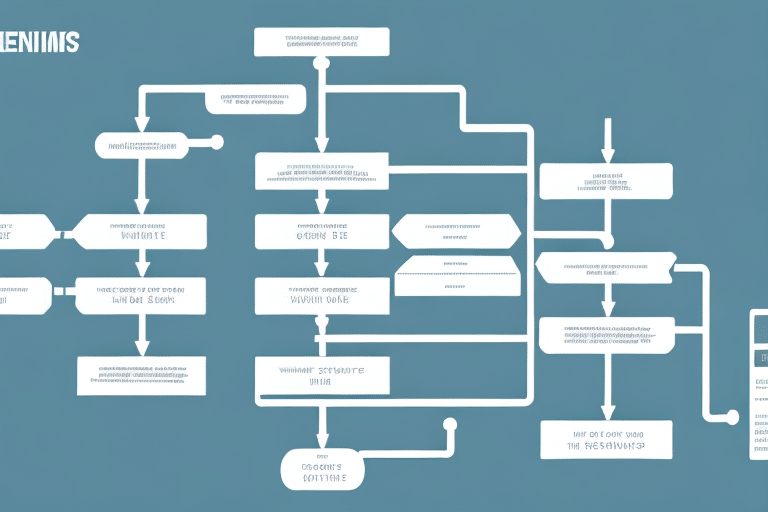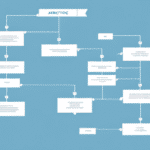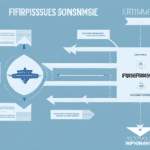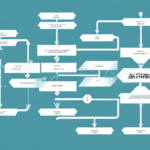Creating an Effective Shipping Returns Process Flowchart: A Comprehensive Guide
Returns are an inevitable aspect of any e-commerce business. Whether due to incorrect shipments, product defects, or a customer's change of mind, handling returns efficiently is crucial. Implementing a well-designed shipping returns process flowchart can streamline your returns process, enhance operational efficiency, and improve customer satisfaction. This guide provides a step-by-step approach to creating an effective shipping returns process flowchart.
Importance of a Shipping Returns Process Flowchart
An organized and efficient returns process is vital for maintaining a positive customer experience. A robust returns process flowchart can:
- Boost Customer Satisfaction: Providing a clear and transparent return process increases customer trust and loyalty.
- Enhance Operational Efficiency: Streamlining returns reduces processing time and operational costs.
- Minimize Errors: A detailed flowchart helps in reducing mistakes, such as lost or damaged items.
- Increase Repeat Business: Satisfied customers are more likely to make repeat purchases.
According to a Statista report, the average return rate in the e-commerce sector is around 20%. Efficiently managing this volume is essential for business sustainability.
Key Components of a Shipping Returns Process Flowchart
A comprehensive shipping returns process flowchart should encompass the following components:
1. Initiation of Return
Define the criteria for returns, such as timeframes, acceptable reasons, and the condition of returned items. Outline the steps customers need to follow to initiate a return, including any necessary documentation or authorization.
2. Return Authorization
Implement a system for approving or rejecting return requests. This may involve verifying the purchase, assessing the reason for return, and determining eligibility based on your return policy.
3. Return Shipping
Detail the logistics of returning the product, including shipping labels, packaging requirements, and designated return carriers. Clarify who bears the shipping cost—whether it's the customer or the business.
4. Inspection and Processing
Establish a procedure for inspecting returned items to assess their condition. Based on the inspection, decide whether to issue a refund, exchange, or store credit.
5. Refund or Exchange
Outline the steps for processing refunds or exchanges, including updating inventory, issuing refunds through the appropriate payment channels, and notifying customers of the resolution.
6. Data Recording and Analysis
Maintain records of all return transactions. Analyze data to identify return trends, common issues, and areas for process improvement.
Choosing the Right Software for Creating Flowcharts
Selecting the appropriate software is crucial for designing an effective returns process flowchart. Consider the following options:
- Lucidchart: A cloud-based platform offering collaborative features and a wide range of templates.
- Microsoft Visio: Ideal for creating complex and highly customizable flowcharts, integrated with the Microsoft Office suite.
- Gliffy: User-friendly with both cloud-based and desktop versions, suitable for teams using Atlassian products like Jira and Confluence.
Evaluate each tool based on your specific needs, budget, and the complexity of your returns process.
Gathering and Organizing Information
Begin by collecting all relevant information related to your returns process, including policies, procedures, and stakeholder input. Engage with customer support, warehouse staff, and management to ensure comprehensive coverage. Organize the information into logical stages, such as initiation, shipping, inspection, and refund, to facilitate the creation of a clear and structured flowchart.
Defining Clear Policies and Procedures
Develop a transparent returns policy that outlines:
- Eligible items for return
- Timeframe for initiating returns
- Condition requirements for returned products
- Restocking fees, if applicable
Complement the policy with detailed procedures for each step of the returns process. Regularly review and update these policies based on customer feedback and return data to ensure they remain effective and customer-centric.
Identifying and Involving Key Stakeholders
Successful implementation of a returns process flowchart requires collaboration among various teams:
- Customer Support: Handles return requests and communicates with customers.
- Warehouse Personnel: Manages the physical processing of returned items.
- Management: Oversees the overall returns strategy and policy enforcement.
- IT Department: Ensures integration with existing systems like CRM and inventory management.
Involving all relevant stakeholders ensures the flowchart accurately reflects the entire returns process and addresses potential challenges.
Designing the Flowchart
When designing your shipping returns process flowchart:
- Use Clear and Consistent Symbols: Different shapes can represent various types of actions or decisions.
- Maintain Logical Flow: Ensure the steps follow a natural sequence, making the process easy to understand.
- Include Decision Points: Clearly mark where decisions are made, such as approval or rejection of a return.
- Ensure Scalability: Design the flowchart to accommodate future changes or expansions in the returns process.
Analyzing and Optimizing the Returns Process
After creating the flowchart, regularly analyze the returns process to identify inefficiencies or bottlenecks. Collect data on return reasons, processing times, and customer feedback to inform improvements. Implement automation where possible to reduce manual tasks and expedite the process. Continuous optimization ensures the returns process remains efficient and customer-friendly.
Integrating the Flowchart with Existing Systems
Seamlessly integrate your shipping returns process flowchart with other business systems such as your e-commerce platform and Customer Relationship Management (CRM) tools. This integration facilitates automatic data syncing, reduces manual entry errors, and provides a unified view of customer interactions. Consult with your IT team or software providers to ensure compatibility and effective implementation.
Training Your Team
Effective training is essential for the successful adoption of the returns process flowchart. Conduct comprehensive training sessions for all stakeholders to ensure they understand their roles and the flowchart's procedures. Provide resources and ongoing support to address any challenges and reinforce best practices.
Maintaining and Updating the Flowchart
Regularly review and update your shipping returns process flowchart to reflect any changes in policies, procedures, or business operations. Engage with stakeholders to gather feedback and incorporate improvements. Keeping the flowchart up-to-date ensures it remains a valuable tool for managing returns efficiently.
Best Practices for an Effective Returns Process
- Involve all relevant stakeholders in flowchart development.
- Create clear and comprehensive return policies.
- Design an intuitive and scalable flowchart.
- Continuously analyze and optimize the returns process.
- Integrate the flowchart with existing business systems.
- Provide thorough training to all team members.
- Maintain and regularly update the flowchart.
Implementing these best practices will help you establish a robust shipping returns process, enhancing both operational efficiency and customer satisfaction. A well-structured returns process flowchart is a strategic asset that can significantly contribute to the success of your e-commerce business.
Conclusion
Creating a shipping returns process flowchart is a strategic move that can streamline operations, reduce costs, and enhance customer satisfaction. By following the steps outlined in this guide, you can develop an effective returns process tailored to your business needs, ultimately driving growth and fostering customer loyalty.




















